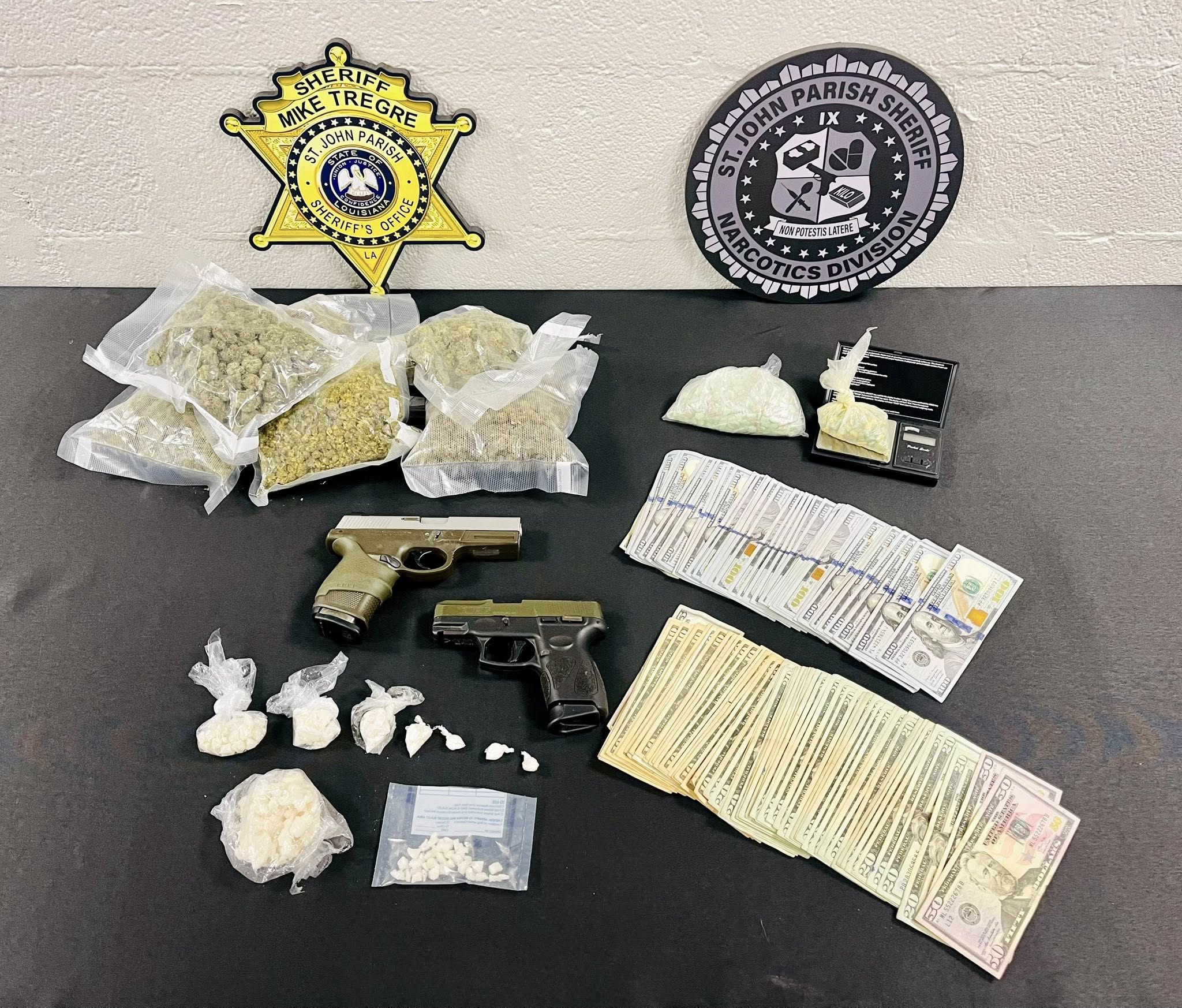Column explores unsolved St. John Parish mystery: Audrey Moate’s fate unknown 64 years after disappearance
Published 12:05 am Saturday, August 1, 2020

- Audrey Moate of Baton Rouge disappeared in St. John the Baptist Parish in November 1956. The case has never been solved.
|
Getting your Trinity Audio player ready...
|
LAPLACE — Nearly 64 years have passed since the chilly November morning 46-year-old Thomas Hotard was discovered dead and blood-soaked on the back seat of his blue sedan on Frenier Road.
A fur trapper walking near Frenier beach had spotted the car the day before and detoured around it when he saw a couple sharing a private moment. Hotard met his demise in that car, but the woman, 31-year-old Audrey Moate, had seemingly vanished without a trace.
Moate’s body was never located despite thorough searches of the surrounding swamplands. She left behind a trail of footprints and a decades-long cold case that brought St. John Parish national attention when it aired in a 1989 episode of Unsolved Mysteries.
Two local men, in conflicting stories, admitted Moate was killed the same day as Hotard and that her body was dumped in the surrounding area. Authorities have theorized she was sexually assaulted and killed. Others gave accounts of a disheveled woman resembling Moate’s description visiting a New Orleans coffee shop and residence in the weeks following Hotard’s murder. Moate’s former mother-in-law reported receiving a brief phone call in December 1956 during which she heard an unmistakable voice ask for help.
HL Arledge is the author of Bayou Justice, a weekly true crime newspaper column/podcast highlighting unsolved crime stories in South Louisiana. He recently published a five-part column providing in-depth coverage of the Hotard-Moate mystery. The series tracks Hotard and Moate’s affair, law enforcement response and theories regarding Moate’s fate. It also follows Moate’s daughter, Deckey Moate, and her lifelong search for answers about her mother’s disappearance.
Arledge interviewed Deckey Moate in the early 2000s, after they ended up in the same online true crime group by chance.
“I’ve had enough to print since interviewing Audrey’s daughter over 10 years ago, but I didn’t want to simply rehash details widely known today. Ironically, I was able to find facts lost to time, simply by digging through newspaper archives from over 60 years ago,” Arledge said.
Arledge has been a journalist since the 1980s, and he has always been interested in unsolved crimes. After working for the Daily Star in Hammond, he moved to California for 12 years and worked in information technology. Upon returning home to Louisiana, he followed up on some of the cases he’d reported on during his time at the newspaper.
“Every time I would think about one of those murders, I would hear it was still a cold case,” Arledge said.
The work he is most proud of has been in relation to the 1987 Selonia Reed murder in Hammond. Arledge wrote several non-consecutive columns on the investigation, which remained a cold case for more than 20 years.
“Now, the guy who was her husband is standing trial along with his alleged accomplice,” Arledge said. “We’re waiting on that to go to trial now. After 20 years, the column prompted the DA to re-open the case. I’m really proud of that.”
Arledge has known about Moate’s case since the Unsolved Mysteries episode in the 1980s. He recently found some older newspaper archives online that contained details lost to time.
“When you go back through the old newspaper archives, you have to compare stories because you can pick up a newspaper one day and then pick up the next day’s paper, and they’ve corrected something from the day before,” Arledge said. “In some cases, some of those facts from the initial reporting people are still using today, even though police later made a correction. A lot of times, it’s about comparing different newspapers and different sources and trying to figure out which one is actually the truth.”
One of the most amazing discoveries from the newspaper stories was testimony implicating Moate’s ex-husband, George Moate. This conflicted with reports from former Sheriff Percy D. Hebert, who reported George Moate’s alibi was “unshakable.”
Arledge also learned the phone call Moate’s ex-mother-in-law received was traced back to the same New Orleans neighborhood of the alleged sightings.
There were other small discoveries, including the fact that the sheriff used a powerful eight-foot electromagnet to search the Frenier swamp. This casts doubt on one man’s claim that he stuffed Moate’s body into a Civil War cannon and disposed of it outdoors.
The column, which can be accessed at bayoujustice.com, is the longest consecutive series Arledge has written. He gave L’OBSERVATEUR permission to publish the columns, which will be shared in upcoming Wednesday print editions as well as online at lobservateur.com.
Arledge’s book, Bayou Justice: Southeast Louisiana Cold Case files, is available in any bookstore, as well as Amazon, Walmart and Barnes & Noble online.





